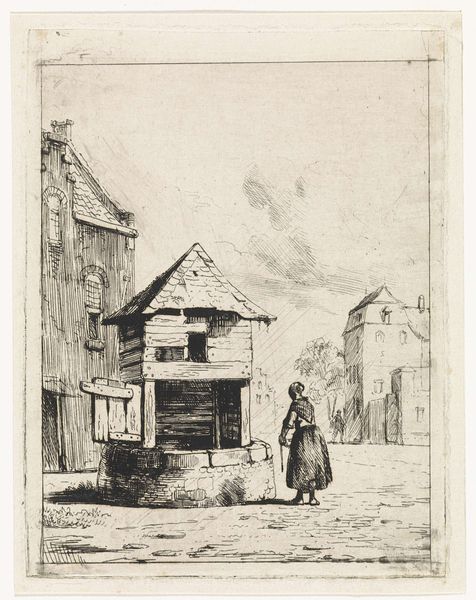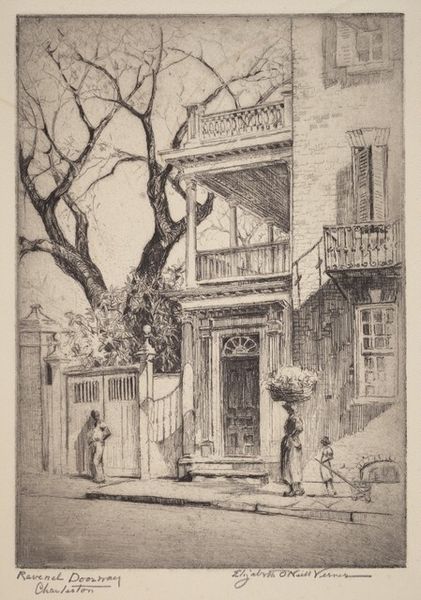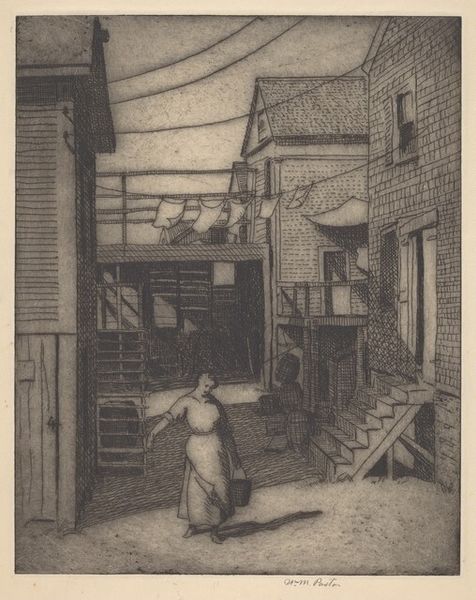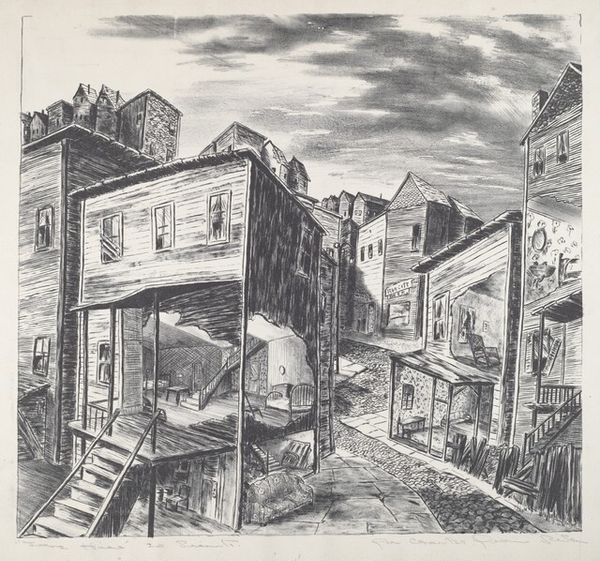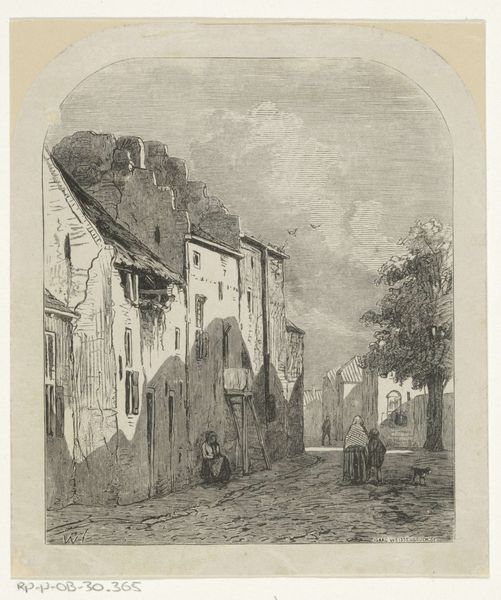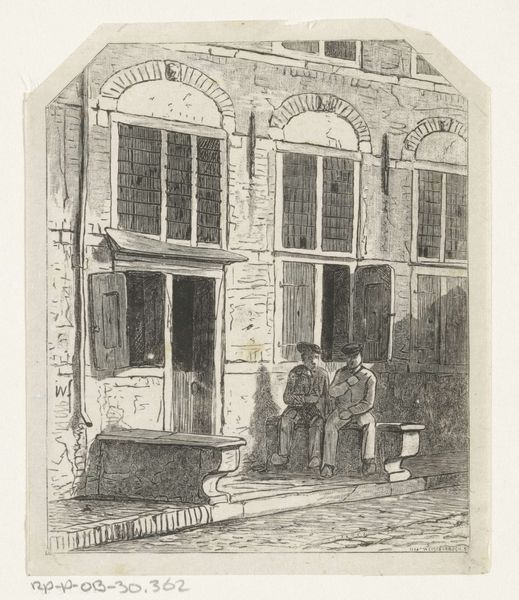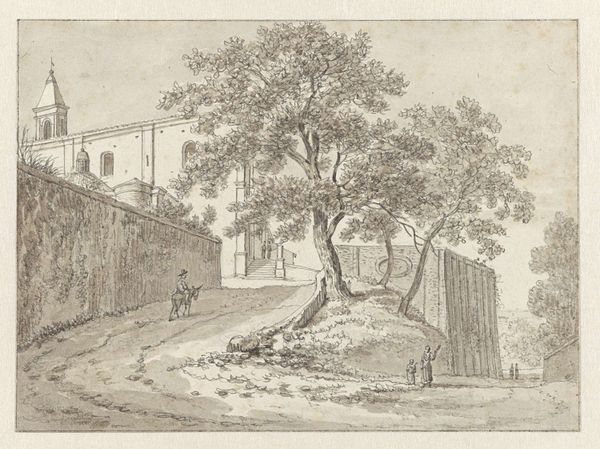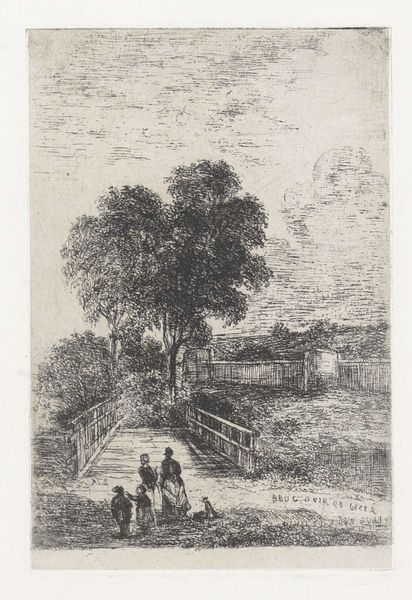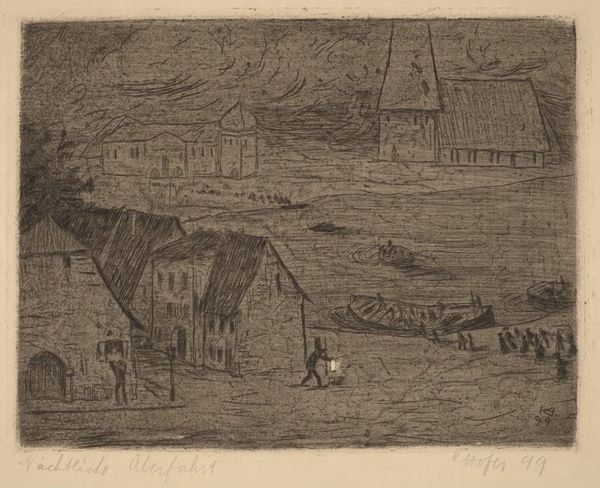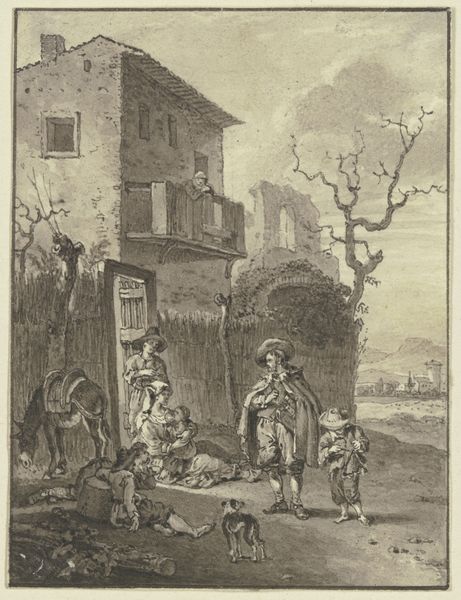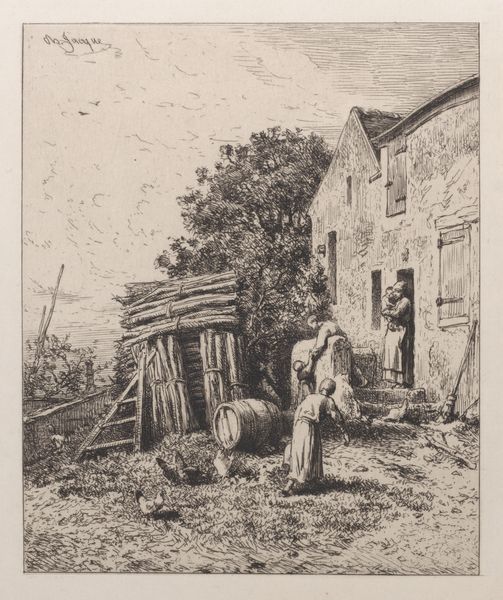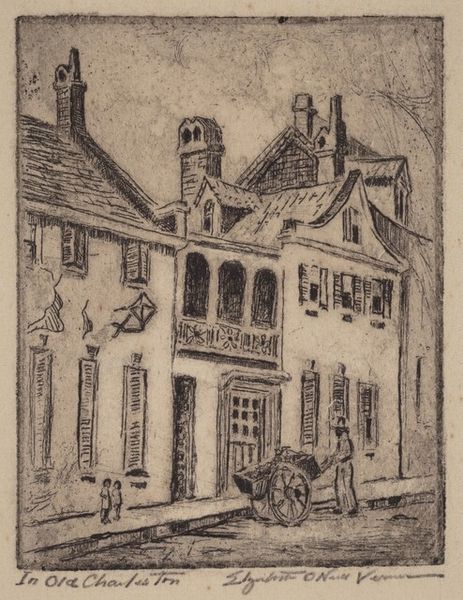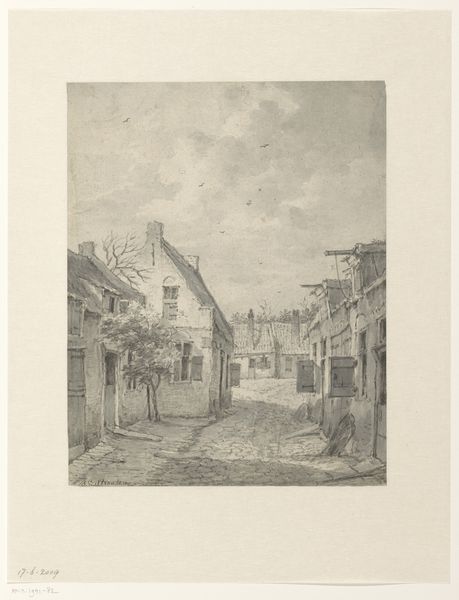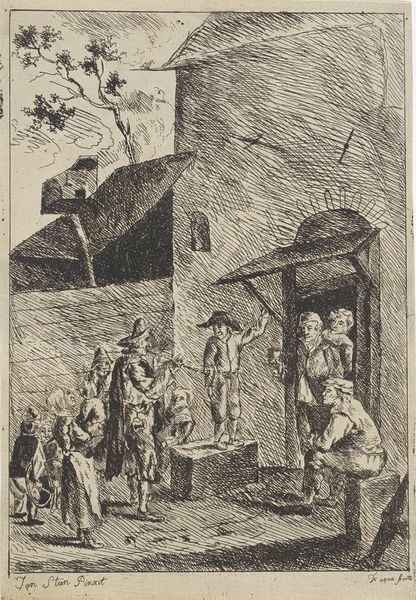
print, etching
# print
#
etching
#
landscape
#
cityscape
#
realism
Dimensions: image: 174 x 127 mm sheet: 276 x 195 mm
Copyright: National Gallery of Art: CC0 1.0
Editor: Here we have Elizabeth O'Neill Verner’s etching, "Do As You Choose Alley," created around 1945. It depicts a narrow city street, maybe a back alley, and the scene is full of figures who appear lost in their own thoughts. What do you see in this piece, looking at it as an iconographer? Curator: It's intriguing, isn't it? This alley isn't just a place; it's a stage. Note how the buildings lean inwards, almost like they're observing the human drama below. The title itself, "Do As You Choose Alley," carries a potent symbolic weight, suggesting a place where societal constraints loosen, and individual will reigns, or perhaps, a place where societal neglect allows any behaviour to flourish. Do you notice the repetition of lines, those planks that build the houses, yet seem like they're building a society that contains all these characters? Editor: I see what you mean! It's almost oppressive. The figure sitting on the stoop looks weighed down. But is that elderly man in the background an allegory, of say, time, or hardship? Curator: It’s interesting you call him out – those standing figures caught in conversation seem tethered by invisible threads to their environment. Notice their positioning; how do you feel their placement impacts the alley’s symbolism? Is he burdened, or does his presence suggest the quiet dignity of survival? Verner uses the architecture and characters not to show individuality, but how all her inhabitants in this Southern alley exist with constraints or freedoms. How might it be viewed today, given current debates around urban development and cultural memory? Editor: That’s given me a lot to consider. It highlights the complex interplay between individual lives and the larger urban environment. The alley becomes a mirror reflecting societal choices, doesn't it? Curator: Exactly. This unassuming scene captures a broader cultural narrative.
Comments
No comments
Be the first to comment and join the conversation on the ultimate creative platform.
